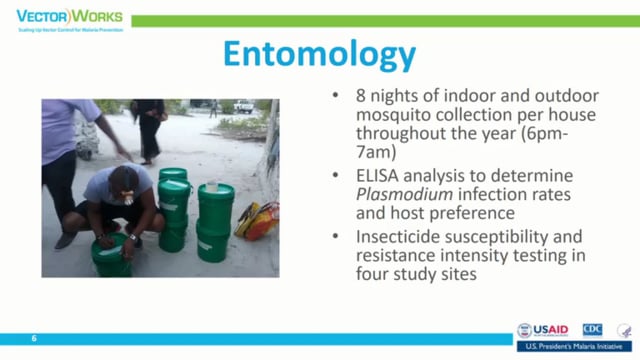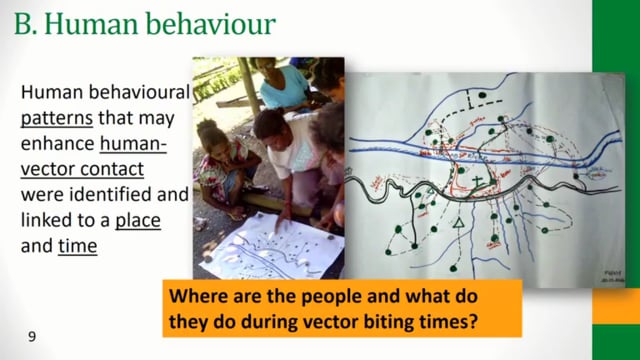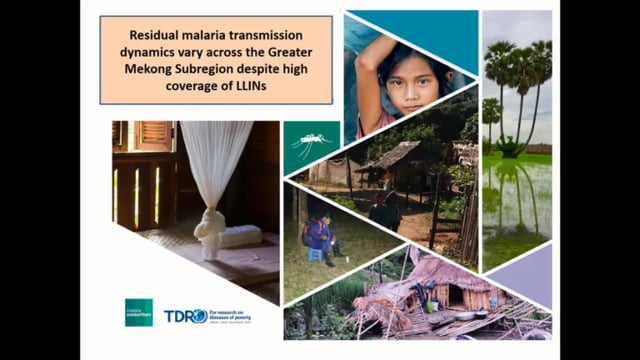ASTMH 2018: Session 168 “Why is Malaria Transmission Persisting in Some Contexts Despite High Coverage of Vector Control Tools, Such as LLINs and IRS? Results From Recent Studies Across Three WHO Regions”
Published: 18/12/2018
THEMES: THEMES: Residual Transmission | Vector Control
MESA Correspondents bring you cutting-edge coverage from the 67th ASTMH Annual Meeting
Session 168: “Why is Malaria Transmission Persisting in Some Contexts Despite High Coverage of Vector Control Tools, Such as LLINs and IRS? Results From Recent Studies Across Three WHO Regions”
Khamis Haji (Zanzibar Malaria Elimination Program) presented on investigating the magnitude and drivers of residual malaria transmission in Zanzibar.
Daniela Rodriquez-Rodriguez (Swiss Tropical and Public Health Institute/Papua New Guinea Institute of Medical Research) presented on understanding human, parasite, vector, and environmental drivers of residual malaria transmission in Papua New Guinea.
John Hustedt (Malaria Consortium) presented on residual malaria transmission dynamics across the Greater Mekong Subregion despite high coverage of long-lasting insecticidal bednets.
Allison Tatarsky (University of California, San Francisco, Global Health Group Malaria Elimination Initiative) presented on an expanded vector control toolbox to reduce residual malaria transmission toward malaria elimination.
The malaria field observed a consistent decline in morbidity and mortality since the turn of the century but for the first time in years, these gains have levelled off. Evidence is needed urgently to better understand the fundamental limits of core interventions and to guide the prioritization of interventions to target transmission that persists in the context of high vector control coverage (i.e. residual malaria transmission).
This session brought together a diverse panel of speakers to present results from recent studies in East Africa, Southeast Asia, and the Western Pacific Regions. The presentations highlighted key issues contributing to ongoing malaria transmission including residual malaria transmission, insecticide resistance, and implementation quality. Vector metrics such as biting and feeding behaviour, transmission dynamics, and species composition, as well as human factors such as nighttime activities, sleeping patterns, migration, use of prevention measures, and the human infection reservoir were discussed. The session featured innovative methods used for measuring and characterizing drivers of transmission drivers. Finally, the session described the latest toolbox of vector control technologies and interventions available now and in the pipeline to address gaps in protection and accelerate progress.
Across the studies, it became clear that an integrated analysis of human infection, human behaviour, and vector behaviour – and the point at which they intersect – will expand and refine our understanding of local transmission ecology and direct an appropriate and targeted response.
The presentations on these studies also reinforced the need to understand local transmission drivers in areas with plateauing or increasing transmission and that the drivers, and response to those drivers, will be different across sites – no one size fits all.
The final presentation emphasized that the toolbox of vector control tools has never before been so expansive yet few are ready for “prime time” given a sluggish research and policy pipeline. There are off-the-shelf tools and approaches that could target residual transmission today, however, using a learning by doing approach including larval source management interventions.
Chairs and Co-chairs: April Monroe (Johns Hopkins Center for Communication Programs) and Florence Fouque (WHO Special Programme for Research and Training on Tropical Diseases)
This report was written by Allison Tatarsky with editorial support from Professor Graham Brown.
Published: 18/12/2018
THEMES: Residual Transmission | Vector Control


